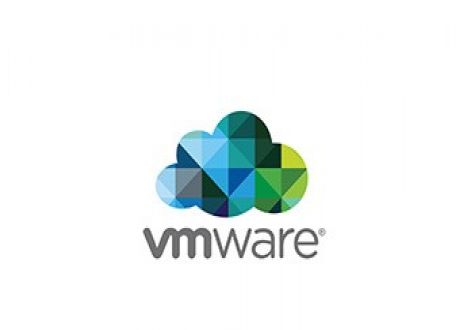- Home
- Video Courses
- Certifications
- 2V0-41.20: Professional VMware NSX-T Data Center Dumps


2V0-41.20: Professional VMware NSX-T Data Center Certification Video Training Course
2V0-41.20: Professional VMware NSX-T Data Center Certification Video Training Course includes 12 Lectures which proven in-depth knowledge on all key concepts of the exam. Pass your exam easily and learn everything you need with our 2V0-41.20: Professional VMware NSX-T Data Center Certification Training Video Course.
Curriculum for VMware 2V0-41.20 Certification Video Training Course



2V0-41.20: Professional VMware NSX-T Data Center Certification Video Training Course Info:
The Complete Course from ExamCollection industry leading experts to help you prepare and provides the full 360 solution for self prep including 2V0-41.20: Professional VMware NSX-T Data Center Certification Video Training Course, Practice Test Questions and Answers, Study Guide & Exam Dumps.
NSX-T 3.0 Exam Prep: VCP-NV 2021 (2V0-41.20) Made Easy
Course Overview
The NSX-T 3.0 certification exam (2V0-41.20) is designed for professionals who want to validate their skills in managing and deploying VMware NSX-T Data Center solutions. This certification is ideal for network virtualization engineers, administrators, and consultants who wish to prove their expertise in NSX-T and its associated technologies. The course provides an in-depth look at how NSX-T works, its core components, and its integration with VMware environments.
NSX-T offers advanced networking and security features, making it a critical tool in the virtualization and data center network landscape. This certification exam tests your understanding of the design, configuration, and operation of NSX-T in modern data centers. The NSX-T platform is highly scalable, supporting multi-cloud environments, and this course will provide you with the skills necessary to effectively manage these complex systems.
The course is divided into two parts. Part 1 will cover the foundational aspects of the NSX-T 3.0 platform, including architecture, installation, and configuration. Part 2 will focus on advanced topics such as security, troubleshooting, and managing NSX-T in production environments. By the end of the course, you will be prepared to sit for the VCP-NV 2021 (2V0-41.20) exam.
NSX-T Architecture and Components
NSX-T is built to operate in diverse environments, including traditional on-premises data centers and multi-cloud infrastructures. The architecture is designed to be flexible and scalable, catering to various network needs, from simple virtualized environments to complex, cloud-native workloads.
The key components of the NSX-T architecture include the NSX Manager, NSX Controllers, and NSX Edge appliances. These components work together to provide networking, security, and routing services. Understanding the interaction between these components is essential to successfully deploying and managing NSX-T.
NSX Manager is the centralized control plane that provides configuration and management of the NSX-T environment. It communicates with the NSX Controllers and the distributed data plane, ensuring that network services are delivered with high performance and reliability. The NSX Controllers are responsible for distributing network state and maintaining consistency across the environment. Meanwhile, the NSX Edge appliances provide perimeter services, such as load balancing and VPNs.
Installation and Configuration
One of the first steps in deploying NSX-T is the installation and configuration of the NSX Manager. The installation process involves setting up the NSX Manager on a virtual machine and ensuring that it is properly integrated with the VMware vSphere environment. Once the NSX Manager is installed, you will need to configure the NSX Manager settings, including network configurations, user roles, and authentication methods.
After the NSX Manager is operational, the next step is to deploy the NSX-T components, including NSX Controllers and NSX Edge appliances. These components are critical for the functioning of the NSX-T environment and must be correctly configured to ensure proper operation. Each component has its own set of configuration parameters that need to be set up, such as IP addresses, routing protocols, and interface settings.
Networking and Security Fundamentals
Networking is at the heart of NSX-T, and a clear understanding of virtual networking principles is essential for the deployment and management of NSX-T environments. In this section, you will learn about logical switches, routers, and distributed firewalls. Logical switches provide network connectivity between virtual machines, while logical routers enable communication between different segments of the virtual network.
NSX-T also provides advanced security features, including the Distributed Firewall (DFW). The DFW is a stateful firewall that is deployed directly on the hypervisor. It offers fine-grained control over network traffic and can be used to enforce security policies at the virtual network level.
In addition to the DFW, NSX-T includes services like VPNs, load balancing, and micro-segmentation. These features work together to ensure that your network is not only functional but also secure, with the ability to isolate workloads and prevent unauthorized access.
Course Modules: Key Learning Areas
The NSX-T 3.0 training course is divided into several key modules that cover the essential areas of network virtualization and management. Each module is designed to build on the previous one, creating a comprehensive learning experience. Here are the core modules that you will explore:
Module 1: Introduction to NSX-T
In the first module, you will be introduced to the fundamentals of NSX-T. You will learn about the platform’s architecture, the role of NSX Manager, and how NSX-T integrates with VMware vSphere environments. This module also covers the basic networking concepts that underpin the NSX-T solution.
Module 2: NSX-T Installation and Setup
This module will guide you through the process of installing and configuring NSX-T components. You will learn how to set up NSX Manager, deploy NSX Controllers, and configure NSX Edge appliances. Practical labs will help you get hands-on experience with the installation process.
Module 3: NSX-T Networking
Networking is a core feature of NSX-T. This module covers the concepts of logical switches, distributed routers, and network segments. You will learn how to configure network services and understand the interaction between virtual networks and physical infrastructure.
Module 4: NSX-T Security
Security is a top priority in any modern network environment. In this module, you will explore the security features of NSX-T, including the Distributed Firewall (DFW), security policies, micro-segmentation, and VPNs. You will also learn how to implement advanced security measures to protect workloads and data.
Module 5: Advanced NSX-T Features
This module delves into the more advanced features of NSX-T, such as load balancing, DNS services, and high availability. You will also learn about the integration of NSX-T with VMware vSphere, vCloud Director, and third-party services.
Module 6: Troubleshooting and Maintenance
Troubleshooting is an essential skill for any network administrator. In this module, you will learn how to identify and resolve common issues in NSX-T environments. The module also covers monitoring, logging, and performance tuning to ensure that your network is running smoothly.
Certification Preparation
The course will also provide you with specific guidance on how to prepare for the VCP-NV 2021 (2V0-41.20) certification exam. This includes an overview of the exam objectives, tips for studying, and sample questions. By the end of this training, you will be equipped with the knowledge and confidence to pass the exam.
Requirements of the Course: Prerequisites and Skills Needed
Before embarking on the NSX-T 3.0 VCP-NV 2021 exam (2V0-41.20) preparation course, it’s important to ensure that you meet certain prerequisites and possess foundational knowledge to maximize your learning experience.
Basic Understanding of Networking Concepts
A fundamental understanding of networking principles is required for this course. You should be familiar with concepts like IP addressing, VLANs, routing, switching, and TCP/IP. Understanding these basics is essential because NSX-T builds on top of traditional networking concepts and adapts them to virtualized environments.
VMware vSphere Experience
Since NSX-T integrates seamlessly with VMware vSphere, prior experience with VMware vSphere is highly recommended. You should be comfortable with vSphere's user interface and concepts such as vSwitches, vCenter Server, and ESXi hosts. If you have experience with VMware products such as vSphere and vCenter, it will significantly ease your learning process for NSX-T.
Familiarity with Virtualization Technologies
Given that NSX-T operates within virtualized environments, it is beneficial to have some understanding of virtualization technologies such as hypervisors, virtual machines (VMs), and virtual networks. A background in virtualization, especially VMware's ESXi, will be helpful when you begin deploying NSX-T components in a VMware-based infrastructure.
Basic Knowledge of Security Protocols
As the NSX-T platform includes various security features, a basic understanding of firewalls, VPNs, and security policies is important. You will be working with the Distributed Firewall (DFW) and will need to understand the concept of security groups, security policies, and how to apply them effectively.
Understanding Cloud Computing (Optional)
Although not a strict prerequisite, familiarity with cloud computing concepts, such as multi-cloud environments and hybrid cloud setups, will give you an advantage in understanding how NSX-T integrates with public and private cloud infrastructures. As NSX-T supports these environments, you will benefit from knowing how virtualization and networking are managed across cloud platforms.
Required Hardware or Software
To participate in this training, you should have access to the following resources:
A computer with the capability to run a virtualization platform (like VMware Workstation, VMware ESXi, or similar).
A valid VMware account and access to the NSX-T software or demo environments.
A lab environment where you can deploy and experiment with NSX-T, including deploying NSX Manager, NSX Controllers, and Edge appliances.
Course Description: What to Expect
This course is designed to provide a comprehensive learning experience, from the basic principles of networking and security to the deployment and management of NSX-T in real-world environments. It is structured to cater to individuals who are preparing for the VCP-NV 2021 certification exam (2V0-41.20) as well as those looking to deepen their expertise in network virtualization using VMware’s NSX-T platform.
Key Learning Outcomes
By the end of this course, you will gain the following skills and knowledge:
A thorough understanding of the NSX-T architecture and components, including NSX Manager, Controllers, and Edge appliances.
Hands-on experience with the installation, configuration, and management of NSX-T in various environments.
Proficiency in configuring logical switches, routers, and security policies.
The ability to implement advanced features like micro-segmentation, load balancing, and VPNs.
Troubleshooting techniques and maintenance best practices to ensure the optimal performance of NSX-T solutions.
The confidence to sit for the VCP-NV 2021 (2V0-41.20) exam and pass with success.
This course uses a combination of theoretical lessons and practical labs to ensure that you gain both the conceptual knowledge and hands-on experience necessary for success in the exam. Additionally, the course includes sample questions and review exercises to help you prepare for the certification exam.
Course Delivery Format
The course is available in various formats to accommodate different learning preferences:
Instructor-led training: Delivered by experienced VMware professionals, this format allows for direct interaction and real-time discussions.
On-demand modules: Pre-recorded lessons that you can complete at your own pace.
Hybrid training: A combination of both instructor-led and on-demand learning.
Each module will feature clear explanations of key concepts, followed by practical exercises that reinforce your learning. You will also have access to supplementary materials, such as study guides, practice exams, and troubleshooting guides, to aid your preparation.
Hands-On Labs
Practical labs form a critical part of the training process. These labs will give you the opportunity to install and configure NSX-T components, create logical switches, apply security policies, troubleshoot network issues, and manage advanced NSX-T features in a real-world environment. Labs are designed to mimic the scenarios you are likely to encounter in your role as an NSX-T administrator or consultant.
Exam Preparation
The final part of the course will focus on exam preparation. You will be guided through the specific objectives of the VCP-NV 2021 (2V0-41.20) certification exam and provided with tips on how to approach different types of questions. Sample exam questions will help you assess your readiness and familiarize you with the exam format.
Who This Course is For: Target Audience
The NSX-T 3.0 VCP-NV 2021 (2V0-41.20) training course is designed for IT professionals looking to specialize in network virtualization and VMware’s NSX-T platform. This includes network engineers, system administrators, and consultants who want to expand their skill set in the management and deployment of virtual networks.
Network Engineers and Administrators
This course is ideal for network engineers and administrators who want to build their expertise in software-defined networking (SDN) using NSX-T. If you are responsible for managing and securing enterprise networks, you will benefit from understanding the features and capabilities of NSX-T, especially if your organization uses VMware products.
Virtualization Professionals
If you already work with VMware vSphere and other virtualization technologies, this course will provide the knowledge you need to extend your skills into network virtualization. By learning how to deploy and configure NSX-T, you’ll be able to integrate virtualized networking into your VMware environments seamlessly.
Cloud Architects and Consultants
For cloud architects and consultants working in multi-cloud or hybrid cloud environments, NSX-T is a critical tool for creating and managing secure, scalable networks across cloud platforms. This course will help you understand how NSX-T can integrate with cloud services, enabling you to design and implement cloud-native network solutions.
IT Professionals Preparing for VMware Certification
If you are preparing for the VCP-NV 2021 certification exam (2V0-41.20), this course will provide you with the necessary knowledge and skills to pass the exam. The VCP-NV certification demonstrates your proficiency in VMware network virtualization and can help advance your career in the IT industry.
IT Managers and Technical Leads
If you are an IT manager or technical lead overseeing a team that handles NSX-T deployments, this course will equip you with the knowledge to manage NSX-T environments effectively. You will learn the concepts necessary to make informed decisions on network architecture, security, and scalability.
Beginners Interested in Network Virtualization
Even if you are new to network virtualization, this course can help you get started. The content is structured in a way that gradually introduces new concepts, making it accessible for beginners while still challenging experienced professionals. With the right amount of effort, you can gain a strong foundational understanding of NSX-T and its capabilities.
Student Feedback
Similar VMware Video Courses































Only Registered Members Can Download VCE Files or View Training Courses
Please fill out your email address below in order to Download VCE files or view Training Courses. Registration is Free and Easy - you simply need to provide an email address.
- Trusted By 1.2M IT Certification Candidates Every Month
- VCE Files Simulate Real Exam Environment
- Instant Download After Registration.
Log into your ExamCollection Account
Please Log In to download VCE file or view Training Course
Only registered Examcollection.com members can download vce files or view training courses.




